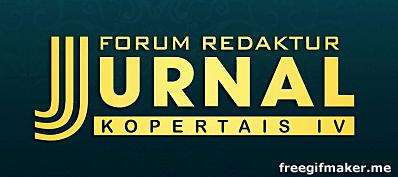THE TABAYYUN CONCEPT FOR RESPONDING TO SOCIAL MEDIA IN THE STUDY OF ISLAMIC EDUCATION
 pdf Download: 471
pdf Download: 471
DOI:
https://doi.org/10.32665/alulya.v7i2.1570Keywords:
adab, hoax news, social media, Islamic education, tabayyunAbstract
The era of change is marked by the development of the internet and smart phones which have changed all aspects of human life, from the way of interaction, daily activities, the economy and even the world of politics which has resulted in the mixing of real and hoax news. One of the goals of Islamic education is to form civilized human beings, including civilized people in social media. This research includes research based on literature review by taking references from books, journals and other sources. The purpose of the study is to describe how Islamic education in shaping civilized people provides guidance and guidance in responding to hoax news including social media. Data collection with documentation techniques and analyzed with content analysis approach. The results of the study show that Islam as a religion that always follows the times, can be said to provide clear guidelines for responding to hoax news on social media. It is hoped that these results can be a reference for anyone, especially Muslims
Downloads
References
Ad-Dimisyqi, A. F. I. bin U. bin K. (n.d.). Tafsir al-Quran al-Adzim(Juz 7). Dar Thibah Li Nasyr Wa Tauzi’.Ad-Dimyathi, A. B. bin S. M. S. (n.d.). I’ânah at-Thâlibîn(Juz 3).
Darul al Fikri.Afiyanti, Y. (2005). Penggunaan Literatur dalam Penelitian Kualitatf. Keperawatan Indonesia, 9(1), 34.
Al Ayyubi, M. Z. (2018). Etika Bermedia Sosial dalam Menyikapi Pemberitaan Bohong (Hoax) Perspektif Hadis. Jurnal Studi Ilmu Alquran Dan Hadis, 19(2), 151.
Al Walidah, I. (2017). Tabayyun di Era Generasi Millenial. Living Hadis, 2(1), 322.
Allcott. (2017). Social Media and Fake News in the 2016 Election. Journal of Economic Perspectives, 31(2), 211–236.
As-Syanqithi, M. A. (n.d.). Adwa’ al-Bayan Fi Iydah al-Quran bil Quran(Juz 52). Maktabah Syamilah.At-Tsa’alabi, A. bin M. bin M. (n.d.). al-Jâwahir al-Hisân Fî Tafsîr al-Quran(Juz 3). Muassasah al-A’lami Lil Mathbu’at.Az-Zuhaili, W. (n.d.). at-Tafsîr al-Munîr Fi al-‘Aqidah Wa as-Syariah Wa al-Manhaj(Juz 26). Dar al-Fikral-Muashir.Creswell, J. (2019). Hoax Dalam Perspektif Islam. El-Ghiroh, 17(2), 105.Ernawati, E. (2018). Berita Hoax dalam Perspektif Alquran. TAJDID, 17(1), 39–46.Fauziyah, U. (2020). Tabayyun dan Hukumnya Sebagai Penanggulangan Berita Hoax di Era Digital dalam Perspektif Fiqih. AL YASINI, 5(1), 123.Firmansyah, R. (2017). Web Klarifikasi Berita Untuk Meminimalisir Penyebaran Berita Hoax. Informatika, 4(2), 230–235.Hamka. (n.d.). Tafsir al-Azhar(Juz 26).Harahap, N. (2014). Penelitian Kepustakaan. Iqra’, 8(1), 68.Harnovinsah, H. (2020). Metodologi Penelitian. Universitas Mercu Buana Press.
Jensen Rivers, J. W. (2008). Media Massa Dan Masyarakat Modern. Kencana.MacDougall, C. D. (1958). Hoaxes. Dover Press.
Mildad, J. (2000). Komunikasi Massa dalam Prespektif Islam (Kajian Terhadap Alquran pada Ayat-ayat Tabayyun).
Teunku Umar.Mubah, S. (2011). Strategi Meningkatkan Daya Tahan Budaya Lokal Dalam Menghadapi Arus Globalisasi. Unair, 24(4), 302.
Muhammad, I. (2019). No TitleEfektifitas Hukum dan Upaya Menangkal Hoax Sebagai Konsekuensi Negatif Perkembangan Interaksi Manusia,. Jurnal Literasi Hukum, 3(2), 1–9.
Munawar. (2000). Adab & Fiqh Bermedia Sosial: Untuk Santri, Pelajar, Mahasiswa & Orangtua. YPI At Takwa.
Nisa’, C. (2020). Gambaran Umum Tentang Tabayyun, Tafsir, dan Media Sosial. IAIN Kudus.
Noor, M. (2018). Penilaian Kualitas Informasi Sebagai Bentuk Sikap Tabayyun Ketika Menerima Informasi di Sosial Media dan Internet. Kajian Perpustakaan Dan Informasi, 2(1), 33–40.
Pratama, P. (2016). Ada 800 ribu Situs Penyebar Hoax di Indonesia. CNN Indonesia.
Sa’diyah, C. (2019). Repon Alquran dalam Menyikapi Berita Hoax. Al-Fanar: Jurnal Ilmu Alquran Dan Tafsir,2(2), 73.
Shihab, M. Q. (2002). Tafsir Al-Misbah. Lentera Hati.Siregar, M. (2017). Tafsir Tematik Tentang Seleksi Informasi. At-Tibyan, 2(1), 114.Siswoko, K. (2017). Kebijakan Pemerintah Menangkal Penyebaran Berita Palsu atau ‘Hoax.’ Muara Ilmu Sosial, Humaniora, Dan Seni, 1(1), 13-19.
Sugiyono, S. (2016). Metode Penelitian Pendidikan: Pendekatan Kuantitatif, Kualitatif, dan R&D(22nd ed.). ALFABETA.Thonthowi, S. M. (n.d.). Tafsir al-Washît Lil Quran al-Karîm(Juz 10). Dar an-Nasyar.Tim. (1997). Al-Qur’an dan Terjemahannya.
Toha Putra.Umar, R. (2018). Pendekatan Konsep Tabayyun Dalam Isu Falak Kontemporari. BITARA International Journal of Civilizational Studies and Human Sciences, 1(2), 37.
Wahid, A. (2017). Hoax Dalam Perspektif Islam. Pendidikan Dan Pranata Islam, 8(2), 191.Wahyudin, A. (2015). Metode Penelitian: Penelitian Bisnis dan Pendidikan(1st ed.). Unnes Press.
Wahyuni, J. (2019). Nilai-nilai Pendidikan dari Kisah Haditsul Ifki dalam Q.S. An-Nur Ayat 11-20 Tentang Sikap Tabayyun dan Kehati-hatian Menerima Berita di Era Teknologi Informasi. Pendidikan Islam Indonesia, 4(1), 69.
Downloads
Published
Issue
Section
License

This work is licensed under a Creative Commons Attribution-NonCommercial-NoDerivatives 4.0 International License.
 pdf Download: 471
pdf Download: 471












